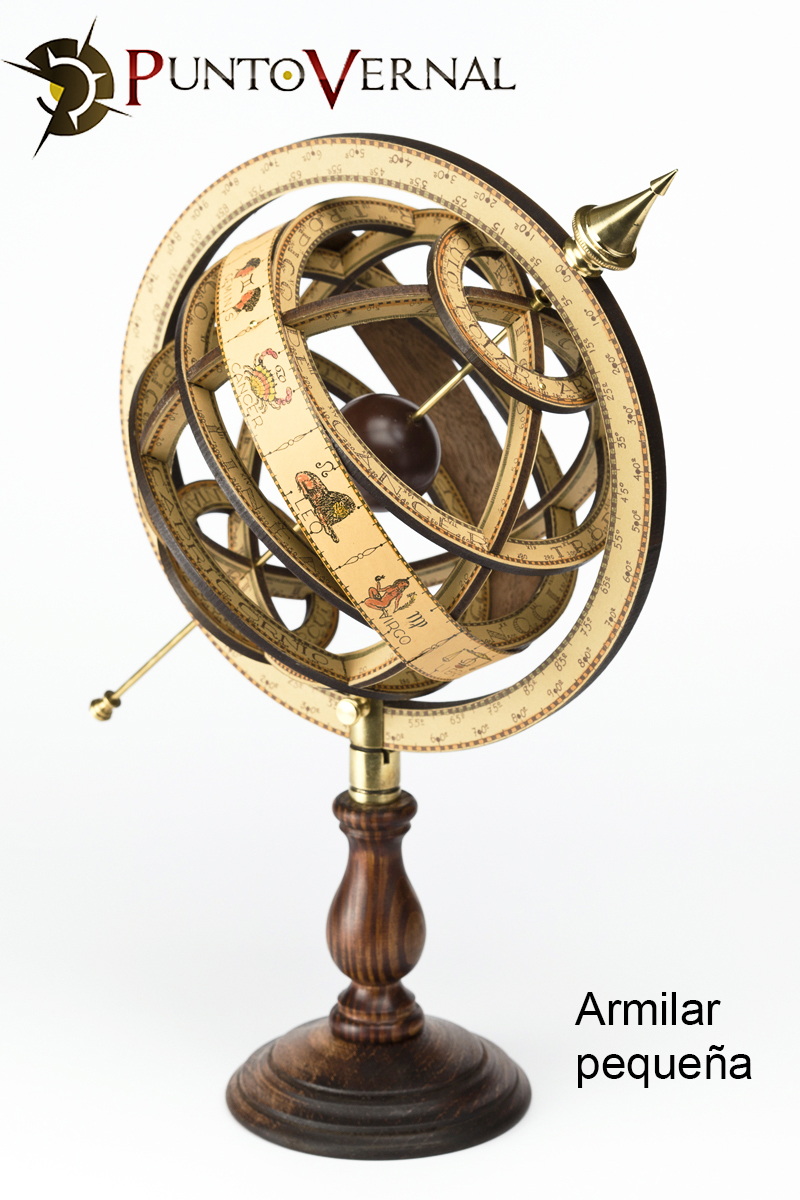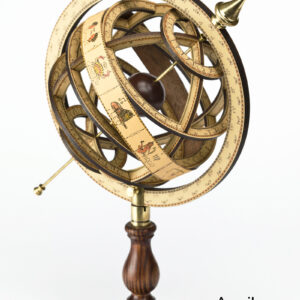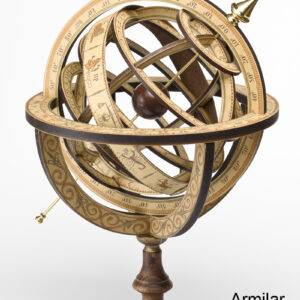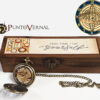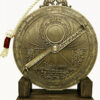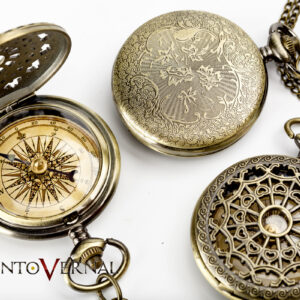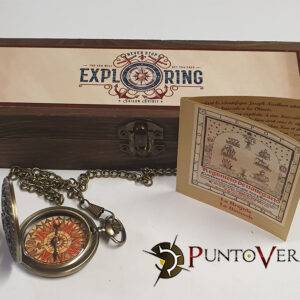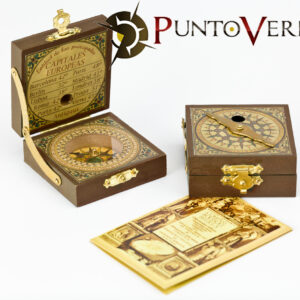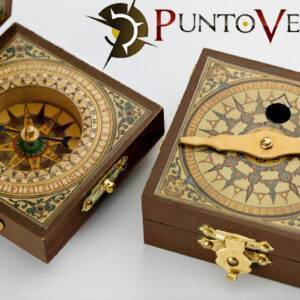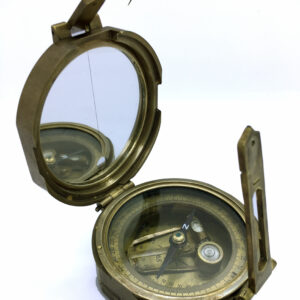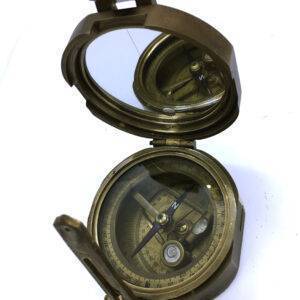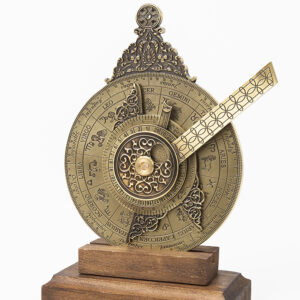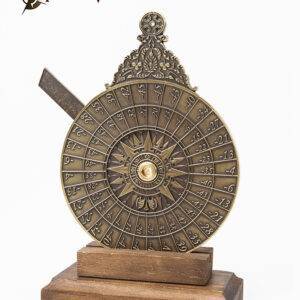ARMILLARY SPHERE
The armillary sphere is an ancient instrument used until the year 1600 to determine the celestial coordinates of stars.
It is believed to have been invented around 255 BC by the Greek astronomer Eratosthenes. It was made up of a certain number of circles (from which comes its Latin name armilla, meaning bracelet) inserted one into the other, representing the celestial equator, the ecliptic, the horizon, the zodiac, etc., in such a way that once directed towards a star, its celestial coordinates could be read on graduated scales.
The armillary spheres of the Ancient and Middle Ages respond to the geocentric model of the Universe and are formed by a structure composed of several metal rings around a small central sphere that represents the Earth. The horizontal and vertical rings make up the circles that allow the position coordinates of the stars to be fixed on the celestial sphere.
Armillary spheres were used by Arab astronomers, by Hipparchus and Ptolemy, and during the 15th and 16th centuries they were greatly developed.
Our armillary sphere is a replica of one of those made by the Danish astronomer Tycho de Brahe (1576-1601). It is completely handcrafted from wood and brass and is accompanied by a manual with its history and instructions for use.
It is available in two sizes and different shapes;
Small
Measurements:
Height: 35 cm
Globe diameter: 21 cm
Large
Measurements
Maximum height: 43 cm
Globe diameter: 26 cm
VAT INCLUDED
https://en.wikipedia.org/wiki/Armillary_sphere

